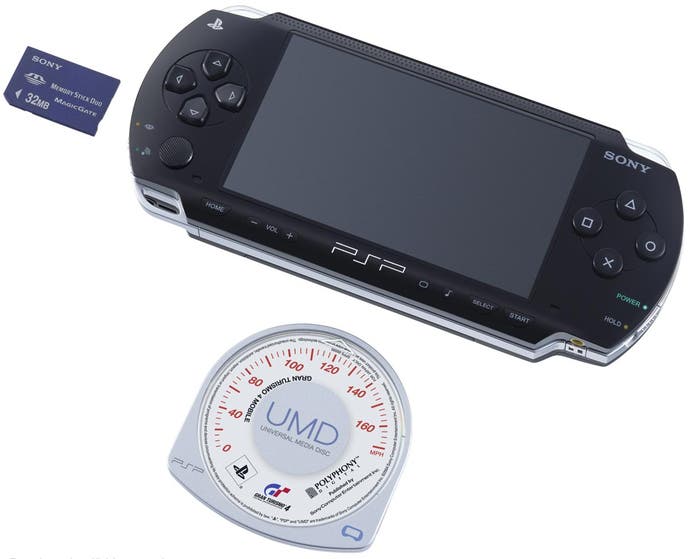PlayStation Portable officially unveiled in Los Angeles
PSP looks eerily familiar - remember the concept designs? Battery life, size statistics and final specs await inside.
Sony has taken the wraps off the latest addition to the PlayStation family at its pre-E3 press conference in Los Angeles, with the diminutive PSP revealed to be remarkably similar to previously released concept designs.

The handheld console is a sleek black slab of toughened plastic, sporting a 4.3 inch widescreen format TFT screen and a comprehensive range of ports and functionality, all housed in a device weighing only 260 grams including the battery.
As we reported several months ago, the system now has 32mb of main RAM (vastly increased from the 8mb originally announced by Sony, at the behest of key developers) along with 4mb of embedded DRAM, and a 333mhz processor not dissimilar to the PS2's Emotion Engine chip.
Along with the custom-created UMD disc drive - which takes 1.8gb minidisk style media which will hold games, movies and music - the PSP also has a USB2 port, a Memory Stick Pro Duo slot, 802.11b wireless networking, an IRDA communication port and an IR remote (which, we assume, means that you'll be able to control Sony home entertainment devices from it).
One of the most crucial statistics, of course, is the battery life - and in this area Sony expects the PSP to last for 10 hours of music playback (which is better than most MP3 players), eight hours of gameplay and two hours of movie playback from the UMD. The game statistic is a little optimistic though - it assumes minimal access of the UMD disc during playtime, which means that on advanced games which stream data, the battery life will be shorter.
The control layout will be familiar to any member of the PlayStation generation; PSP has the standard triangle/square/circle/cross buttons on the right hand side, L and R buttons on the shoulders, and a d-pad and miniature analogue stick on the left hand side.
The device also sports Start, Select and Home buttons, as well as switches to turn power on and off (which doubles up as a Hold button), control brightness, alter the audio mode or change the volume, and turn the battery-sapping wireless LAN functions on and off.
No price point for the PSP has been discussed as yet, but when you buy the system (which won't be until after Christmas in the USA and Europe, it has been confirmed) you'll be able to buy a whole stack of accessories along with it. Currently planned are a stand, a set of headphones with remote control, a second headphone model which also comes with a microphone, a case, a strap and an external battery back - shades of the Game Gear here, although it's a sensible accessory to release.
Interestingly, a number of other USB devices are being demonstrated working on the PSP - including a camera, a GPS (global positioning) unit and a keyboard. Once you start thinking through the possibilities of such devices, you have to start wondering about the scope of Sony's ambitions for the device...

